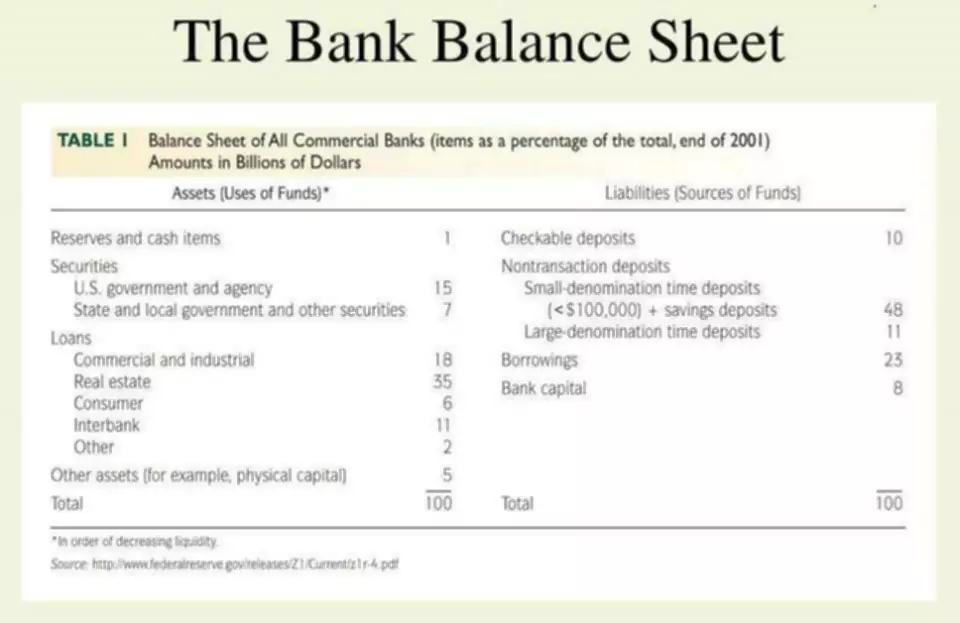Content
- Treasury Coupon-Issue and Corporate Bond Yield Curve
- I am an independent contractor. Am I eligible for unemployment benefits under the CARES Act?
- I am about to exhaust my regular unemployment compensation benefits. What kinds of relief does the CARES Act provide for me?
- COVID19 Economic Relief
- Total Funds

$85,000,000 for centers for independent living that have received certain grants. Up to $65,000,000 for electronic health record stabilization and support, including for planning and tribal consultation. Of which, $3,390,600,000 shall be for operation and maintenance (O&M), and $415,000,000 shall be for research, development, test and evaluation (RDT&E) to prevent, prepare for, and respond to coronavirus. Allows the Director of the Bureau, during the covered emergency period, cares act if the Attorney General finds that emergency conditions will materially affect the functioning of the Bureau, to lengthen the maximum amount of time for which the Director is authorized to place a prisoner in home confinement. $15,510,000,000 shall be placed in a contingency reserve to be allocated as the Secretary of Agriculture deems necessary to support participation should cost or participation exceed budget estimates to prevent, prepare for, and respond to coronavirus.
- If a provider chooses to retain the funds, it must attest that it meet these terms and conditions of the payment.
- Section 2202 of the Coronavirus Aid, Relief, and Economic Security Act , enacted on March 27, 2020, provides for special distribution options and rollover rules for retirement plans and IRAs and expands permissible loans from certain retirement plans.
- Of the funds provided, not less than $400,000,000 shall be made available to meet the direct needs of tribes.
- The Provider Relief Fund Terms and Conditions and applicable legal requirements authorize HHS to audit Provider Relief Fund recipients now or in the future to ensure that program requirements are met.
- HHS reserves the right to audit Provider Relief Fund recipients now or in the future, and may pursue collection activity to recover any Provider Relief Fund payment amounts that have not been supported by documentation or payments not used in a manner consistent with program requirements or applicable law.
- Potential applicants can use our program eligibility toolto determine if a project is in an eligible area.
Yes, a parent organization can accept and allocate General Distribution funds at its discretion to its subsidiaries, as long as the Terms and Conditions are met. Eligible health care entities, including those that are parent organizations must substantiate that these funds were used for health care-related expenses or lost revenue attributable to COVID-19, and that those expenses or losses were not reimbursed from other sources and other sources were not obligated to reimburse them. Providers have at least 12 months, and as much as 18 months, based on the payment received date, to control and use the payments for expenses and lost revenues attributable to coronavirus incurred during the Period of Availability. If a provider ceased operation as a result of the COVID-19 pandemic, they are still eligible to receive Provider Relief Fund payments so long as they provided on or after January 31, 2020, diagnoses, testing, or care for individuals with possible or actual cases of COVID-19. HHS broadly views every patient as a possible case of COVID-19, therefore, care does not have to be specific to treating COVID-19.
Treasury Coupon-Issue and Corporate Bond Yield Curve
Highlights are provided below, followed by summaries of provisions in the tables; not included are provisions that are not closely related to health but which are important aspects of the response to the outbreak, such as those pertaining to support for small businesses and severely stressed sectors of the U.S. economy and childcare. The administrator of an eligible retirement plan may rely on an individual’s certification that the individual satisfies the conditions to be a qualified individual in determining whether a distribution is a coronavirus-related distribution, unless the administrator has actual knowledge to the contrary. Although an administrator may rely on an individual’s certification in making and reporting a distribution, the individual is entitled to treat the distribution as a coronavirus-related distribution for purposes of the individual’s federal income tax return only if the individual actually meets the eligibility requirements.

In general, it is anticipated that eligible retirement plans will accept repayments of coronavirus-related distributions, which are to be treated as rollover contributions. However, eligible retirement plans generally are not required to accept rollover contributions. For example, if a plan does not accept any rollover contributions, the plan is not required to change its terms or procedures to accept repayments. In general, yes, you may repay all or part of the amount of a coronavirus-related distribution to an eligible retirement plan, provided that you complete the repayment within three years after the date that the distribution was received. If you repay a coronavirus-related distribution, the distribution will be treated as though it were repaid in a direct trustee-to-trustee transfer so that you do not owe federal income tax on the distribution. The plan boosted payments to healthcare providers and suppliers by $100 billion through various programs, including Medicare reimbursements, grants, and other direct federal payments. The CARES Act can be broken into seven major areas, including benefits for individuals, unemployment assistance, small business relief, big and medium-sized business relief, tax breaks and credits, hospital and healthcare assistance, and state and local government.
I am an independent contractor. Am I eligible for unemployment benefits under the CARES Act?
Under the CARES Act, the Coronavirus Relief Fund is to be used to make payments for specified uses to states and local governments. HRSA is only reconsidering Phase 4 General Distribution and ARP Rural applications and payments at this time. For more information, please review HRSA’sPhase 4 and ARP Rural Reconsiderationspage. Any changes to payment determinations are subject to the availability of funds. The attestation portals require payment recipients to confirm they received a payment and the specific payment amount that was received; and agree to the Terms and Conditions of the payment.
The Small Business Administration and the Department of Treasury have begun releasing the information that will guide the programs created through the Coronavirus Aid, Relief, and Economic Security Act. Congress created several different formula and discretionary allocations within HEERF. Please click on the links below to be taken for information and resources for the specific program or distribution.
I am about to exhaust my regular unemployment compensation benefits. What kinds of relief does the CARES Act provide for me?
If a provider that sold a practice that was included in its most recent tax return gross receipts or sales figure can attest to meeting the Terms and Conditions, it may accept the funds. In particular, all recipients will be required to substantiate that these funds were used for health care-related expenses or lost revenues attributable to coronavirus, and that those expenses or losses were not reimbursed from other sources and other sources were not obligated to reimburse them. HHS reserves the right to audit Provider Relief Fund recipients now or in the future, and may pursue collection activity to recover any Provider Relief Fund payment amounts that have not been supported by documentation or payments not used in a manner consistent with program requirements or applicable law.
- The Coronavirus Aid, Relief, and Economic Security Act was signed into law on March 27, 2020, to aid response efforts and ease the economic impact of COVID-19.
- FDA is considering comments to our draft guidance on Reporting Amount of Listed Drugs and Biological Products Under Section 510 of the Federal Food, Drug, and Cosmetic [FD&C] Act, including comments about the recommended timeframes for submitting the required reports.
- $200,000,000 for the Secretary of Agriculture to provide grants to the Commonwealth of the Northern Mariana Islands, Puerto Rico, and American Samoa for nutrition assistance to prevent, prepare for, and respond to coronavirus, domestically or internationally.
- If a provider that sold a practice that was included in its most recent tax return gross receipts or sales figure can attest to meeting the Terms and Conditions, it may accept the funds.
- Additional information will be posted as available on theFuture Paymentspage.
- The economic stimulus package in the CARES Act provides various benefits for businesses and certain nonprofits, as more fully described in the tables below.
- Under the CARES Act, the WBA may be supplemented by the additional unemployment assistance provided under the Act.
For the duration of the public health emergency, allows the Assistant Secretary of Aging to waive the dietary guidelines as set forward by the Secretary of HHS and the Secretary of Agriculture. A coronavirus-related distribution is a distribution that is made from an eligible retirement plan to a qualified individual from January 1, 2020, to December 30, 2020, up to an aggregate limit of $100,000 from all plans and IRAs.
COVID19 Economic Relief
The job an individual held before the spread of COVID-19 will constitute, in the vast majority of cases, suitable employment for purposes of unemployment insurance eligibility. As a general matter, you are likely to be eligible for PUA due to concerns about exposure to the coronavirus only if you have been advised by a healthcare provider to self-quarantine as a result of such concerns. In addition to the COVID-19 response efforts, the CARES Act included authorities intended to enhance FDA’s ability to identify, prevent, and mitigate possible shortages of human and animal drugs by, among other things, enhancing FDA’s visibility into the drug and medical product supply chains. Drug shortages can occur for various reasons, including manufacturing and quality problems, delays, and discontinuations. Drug manufacturers provide FDA with most of the drug shortage information the agency receives, and the agency works closely with manufacturers to prevent or reduce the impact of shortages.
Monroe Business Owner Pleads Guilty to Money Laundering in … – Department of Justice
Monroe Business Owner Pleads Guilty to Money Laundering in ….
Posted: Tue, 13 Dec 2022 23:26:37 GMT [source]
The CARES Act was the first piece of coronavirus legislation to place a moratorium on foreclosures and evictions. However, on Aug. 26, 2021, the Supreme Court rejected the latest extension requested by the CDC.
